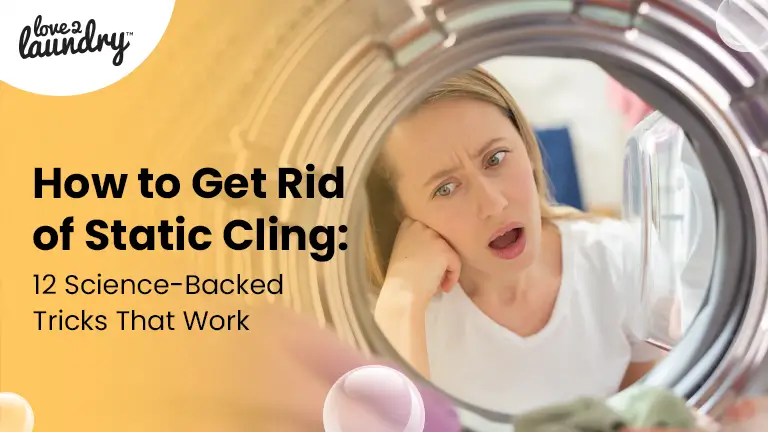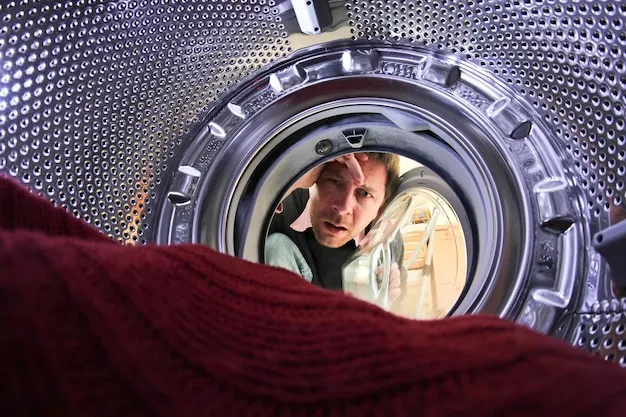How to Get Rid of Static Cling: 12 Science-Backed Tricks That Work

There are a few everyday annoyances quite as frustrating as static cling. That moment when your skirt inexplicably adheres to your tights, a sock remains stubbornly glued to a sweater, or a shock zaps your fingers can ruin an otherwise smooth morning. This cling is a visible and tactile reminder of an invisible electrical charge.
This common wardrobe woe is a simple physics issue that can be easily controlled. Static electricity builds up when certain fabrics rub together, causing electrons to jump from one material to another. This creates an imbalance of positive and negative charges, and objects with opposing charges are drawn together, resulting in the cling we all dread.
Understanding this basic scientific principle is the first step toward permanently solving the problem. This blog offers a definitive guide on how to get rid of static cling using twelve proven, science-backed tricks. We cover fast fixes you can use right before walking out the door, as well as long-term changes to your laundry routine that prevent static from forming in the first place.
What Causes Static Cling in Clothes?
Static cling is caused by the buildup of static electricity, which occurs when friction, such as clothes tumbling in a dryer, causes electrons to transfer between fabrics. This transfer creates an imbalance between positive and negative charges, causing items to stick together.
Synthetic fabrics like polyester, nylon, and acrylic are most prone to this charge buildup due to their insulating properties. This problem is greatly amplified during winter or in dry seasons because the lack of humidity prevents the charge from naturally dissipating into the air.

12 Science-Backed Tricks on How to Get Rid of Static Cling
Here are the definitive tips you need to stop static cling, leveraging an understanding of how static electricity works to effectively remove static from your clothing in various situations.
Quick Fixes While Wearing Clothes (On-the-Go)
These are on-the-go, easy fabric care tips to resolve static when you’re already dressed:
- Apply a Static-Reducing Spray or Fabric Refresher: The electrical charge is immediately neutralised with a brief mist of store-bought spray or a homemade solution.
- Dampen Clothes a Little with Water (Spritz Bottle): A fine mist of water safely dissipates static charge, acting as a conductor.
- Rub Clothing with a Metal Hanger or Aluminium Foil Ball: Metal is grounded and instantly draws the charge away from the fabric.
- Apply a Light Mist of Hairspray to the Inside of Clothes: The polymers in hairspray provide a short-term friction-reducing barrier.
- Moisturise Your Skin Before Dressing: Applying lotion increases your skin’s conductivity, reducing friction that generates static.
In the Laundry Room (During Washing & Drying)
These quick laundry tips focus on prevention during the cleaning process, helping to maintain the charm of preloved fashion clothing and providing tips for keeping your wardrobe vibrant:
- Use Dryer Sheets to Neutralise Static: The dryer sheets’ chemical softeners neutralise static by depositing a positive charge that balances the garments’ negative charge.
- Use Wool Dryer Balls as a Natural Substitute: These balls reduce static by absorbing moisture and shortening drying time.
- Separate Synthetic and Natural Fabrics Before Washing: Washing like materials together prevents the transfer of electrical charge between them.
- Include Fabric Softener in the Wash Cycle: The electrical charge originates from fibre-to-fibre friction, which is lessened by the softening chemicals.
- Avoid Over-Drying Clothes: Dry heat is a significant source of static, so minimise time in the dryer.
- Hang-Dry Delicate or Static-Prone Clothes: Air drying bypasses the high-friction, low-humidity environment of a machine dryer.
- Increase Humidity in Your Laundry Space/Home: Using a humidifier adds moisture to the air, helping dissipate static charges as they form.
Preventing Static Cling Before It Happens
This proactive approach focuses on changing your laundry habits to disrupt the formation of the electrical charge, offering a long-term solution for how to get rid of static cling. The friction of clothing rubbing together in the dryer is where static cling comes from, so adjusting your routine eliminates static cling by preventing the charge from building up in the first place.
You should invest in quality detergents and fabric conditioners to lubricate fibres, and always wash similar fabrics together to stop synthetics from charging up other items. Consistency in these preventative steps dramatically reduces the frequency of dealing with the resulting static electricity problem.

Why Professional Laundry Services Can Help
Love2Laundry’s wash & fold services address static issues with specialised, eco-friendly techniques and high-quality equipment. Unlike home drying, our precise drying methods ensure clothes are not over-dried, which is the primary cause of static cling.
Our expert application of conditioning agents and use of techniques for how to remove static from clothes consistently provides a smooth result. This professional, delicate handling successfully eliminates static cling and offers a fantastic alternative to learning how to get rid of static cling yourself or using a dryer at all; simply let them handle your laundry with an app.
For a simpler solution, remember always to try to air-dry clothes instead of using a machine.
FAQs – How to get rid of static cling
How do I get rid of static cling asap?
Rub a dryer sheet or a metal object, like a hanger, over the garment; this is the quickest way to get rid of static cling right now. Alternatively, lightly mist the item with water or a static-guard spray to instantly resolve the static electricity problem.
What is a natural static remover?
Distilled white vinegar is a simple and effective natural static remover that should be added during the rinse cycle of your laundry. Additionally, a spritz of water or a gentle touch to a grounded metal object can instantly eliminate static cling from clothing.
What fabrics are most prone to static cling?
Synthetic fabrics like polyester, nylon, and acrylic are most prone to static cling because they readily build up charge through friction. Natural fibres like wool and silk can also generate static, especially in dry conditions.
Are dryer sheets or wool dryer balls better for reducing static?
Wool dryer balls are a reusable, chemical-free option that reduces drying time and static; they’re generally better for the long term. Dryer sheets contain fabric softeners that neutralise static electricity, offering a very effective one-time solution for static reduction.
Does humidity really make a difference in static cling?
Yes, humidity significantly reduces static cling because water molecules in the air act as a conductor, preventing the buildup of static electricity. Static is a much bigger problem in dry environments or during the winter.
Wrap Up!
The science of friction and humidity offers many reliable ways to tackle the annoying static electricity problem. From the quick fix of a safety pin to the long-term solution of adding moisture to your laundry, these twelve tricks give you the power to manage cling.
If you follow these simple and effective methods, you will know precisely how to get rid of static cling in any situation. These tips make sure your clothes are smooth and successfully eliminate static cling from your life for good.


